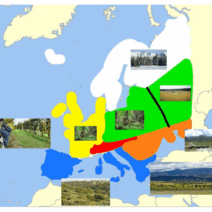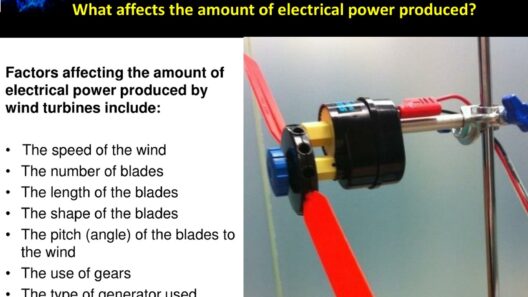Energy conservation is a critical aspect of modern physics, particularly when considering the efficiency of objects in motion, such as falling bodies. Understanding the principles of energy conservation helps us grasp the intrinsic limits of energy usage, especially in our endeavors to mitigate energy waste. In this discussion, we shall explore the intricate physics governing how energy conservation occurs in objects as they fall, the implications for efficiency, methods to optimize energy use, and the real-life applications of these principles.
When an object falls, the fundamental law at play is the conversion between potential energy and kinetic energy. Potential energy is the energy stored in the object due to its position in a gravitational field. As the object descends, this potential energy is converted into kinetic energy, which is the energy of motion. The mathematical representation of gravitational potential energy (PE) is given by the equation:
PE = mgh,
where m is mass, g is the acceleration due to gravity (approximately 9.81 m/s² on Earth), and h is the height from which the object falls. Conversely, the kinetic energy (KE) can be expressed as:
KE = (1/2)mv²,
where v is the velocity of the falling object. As the object descends, its height decreases while its speed increases, leading to a continuous transfer of energy forms.
One critical aspect of energy conservation is the concept of mechanical energy conservation, applicable when no non-conservative forces (like air resistance) act on the object. According to the Law of Conservation of Energy, the total mechanical energy remains constant:
PE_initial + KE_initial = PE_final + KE_final.
In a vacuum, this principle holds true perfectly. However, in real-world scenarios, air resistance plays a significant role, introducing dissipative forces that transform some kinetic energy into thermal energy, thereby reducing overall efficiency. Thus, an understanding of drag forces and their impact on falling objects becomes vital in calculating energy conservation accurately.
To optimize energy conservation in falling objects, various strategies can be implemented. One such approach is to minimize drag forces through streamlined shapes. A classic illustration of this is seen in skydivers as they adjust their body orientation; by adopting a head-down position, they significantly reduce air resistance, allowing for a faster fall and less loss of kinetic energy. Engineers leverage similar principles in designing vehicles and structures, utilizing aerodynamic and hydrodynamic shapes to enhance energy efficiency during movement.
Moreover, materials play a crucial role in the energy conservation of falling objects. Different materials exhibit varying densities, strengths, and resistance to deformation. For instance, lightweight materials tend to experience less gravitational pull and may require less energy to attain their peak kinetic energy. This insight is particularly beneficial in industries focused on transportation; the aviation and automotive sectors continuously seek to manufacture lighter vehicles that demand less fuel.
In terms of applications, energy conservation concepts are pivotal in designing systems that harness the energy from falling objects. For instance, hydropower plants utilize the potential energy of water stored at elevation. When the water falls, it spins turbines that convert kinetic energy into electrical energy. This illustrates a practical manifestation of energy conservation principles and underscores the importance of utilizing natural forces efficiently.
For engineers and architects, an understanding of how energy is conserved and transformed in falling bodies directly influences building design. Structures are often designed with considerations for wind loads and gravitational forces, ensuring that they can withstand extraneous pressures while maximizing energy efficiency. Using materials that align with energy conservation can result in enhanced structural integrity without sacrificing sustainability.
Technological advancements have sparked further interest in optimizing energy conservation strategies. For example, researchers are exploring smart materials that change properties under certain conditions, thus enabling them to adapt to gravitational energy changes dynamically. These innovations could lead to breakthroughs in several industries, from construction to aerospace, yielding greater energy savings and improving overall efficiency.
It’s essential to acknowledge that the physics underlying energy conservation in falling objects transcends mere academic interest; it significantly impacts environmental sustainability. By understanding and applying these principles, society can work toward reducing energy consumption and associated greenhouse gas emissions. Innovations in energy-efficient technologies are paramount in addressing climate change challenges.
The evolution of sustainability practices is also aligned with the principles of energy conservation. Organizations worldwide are progressively adopting frameworks that prioritize energy-efficient technologies and processes. This systemic shift not only conserves energy but also drives down operational costs, proving that sustainability and economic viability can coexist harmoniously.
Furthermore, public awareness plays a vital role in promoting energy conservation efforts. Educational programs emphasizing the importance of understanding energy mechanics can empower individuals to adopt energy-saving practices in daily life. This grassroots movement is pivotal in fostering a culture of sustainability and responsibility toward our environment.
In conclusion, understanding the physics of energy conservation in falling objects offers valuable insights for optimizing efficiency across various sectors. Through the application of aerodynamic principles, material science, and innovative technologies, we can harness the power of energy conservation to create a more sustainable future. The continuous pursuit of knowledge in this domain not only drives technological advancements but also fosters a global commitment to preserving our planet for future generations. Embracing these concepts today may yield profound benefits, enabling us to navigate the complexities of energy consumption in the face of escalating climate challenges.








